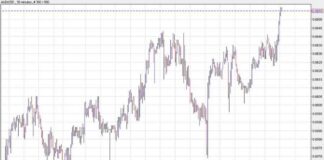The October Consumer Price Index is expected to show slow progress in reducing inflation. The headline CPI is projected to have increased by 0.2% in October, bringing the 12-month change in consumer prices to 2.5%. Prices excluding food and energy are likely to have risen by 0.3% for the third consecutive month, primarily driven by an increase in goods prices while services inflation remains subdued.
The sluggish pace of services inflation and firmer goods prices indicate challenges in achieving overall progress in inflation reduction. The CPI is anticipated to have advanced by 0.2% in October, pushing the year-over-year rate to 2.5%. Excluding food and energy, a 0.3% monthly increase is expected to keep the core index up by 3.3% year-over-year, higher than its pre-pandemic levels.
Food prices are expected to have a more moderate increase in October compared to the previous month, with the overall food inflation rate estimated to be around 2.2%. Gas prices continued to decline last month, contributing to a decrease in energy goods prices. However, the impact of energy costs on overall inflation is diminishing, with potential risks of price increases due to geopolitical tensions in the Middle East.
Core inflation, excluding food and energy components, has been slow to unwind pandemic-related price distortions. A monthly gain of 0.28% is expected to push the three-month annualized rate of core CPI to 3.6%, maintaining the 12-month rate at 3.3%. While core goods prices are likely to increase slightly in October, the inflationary pressures from new and used cars may ease in the coming months.
Services categories have seen a slower decline in inflation, with a 0.34% rise expected in services excluding food and energy. Primary shelter costs are anticipated to have increased at a similar pace as in September. Travel prices may have increased due to hurricane-related factors, while other core services like vehicle insurance, tuition, and medical care are expected to show smaller monthly gains.
The journey towards price stability is ongoing, with several factors influencing inflation levels. Potential risks such as labor supply constraints, import price impacts from deglobalization, and geopolitical tensions could lead to higher inflation in the near to medium term. The policies proposed by the incoming administration may also affect inflation levels in the coming year.
In conclusion, while progress has been made in reducing inflation, challenges remain in achieving the target set by the Federal Reserve. The path to price stability may take time, with various factors influencing the trajectory of inflation in the future. Stay tuned for updates on the economic outlook and inflation forecast in the coming months.

















